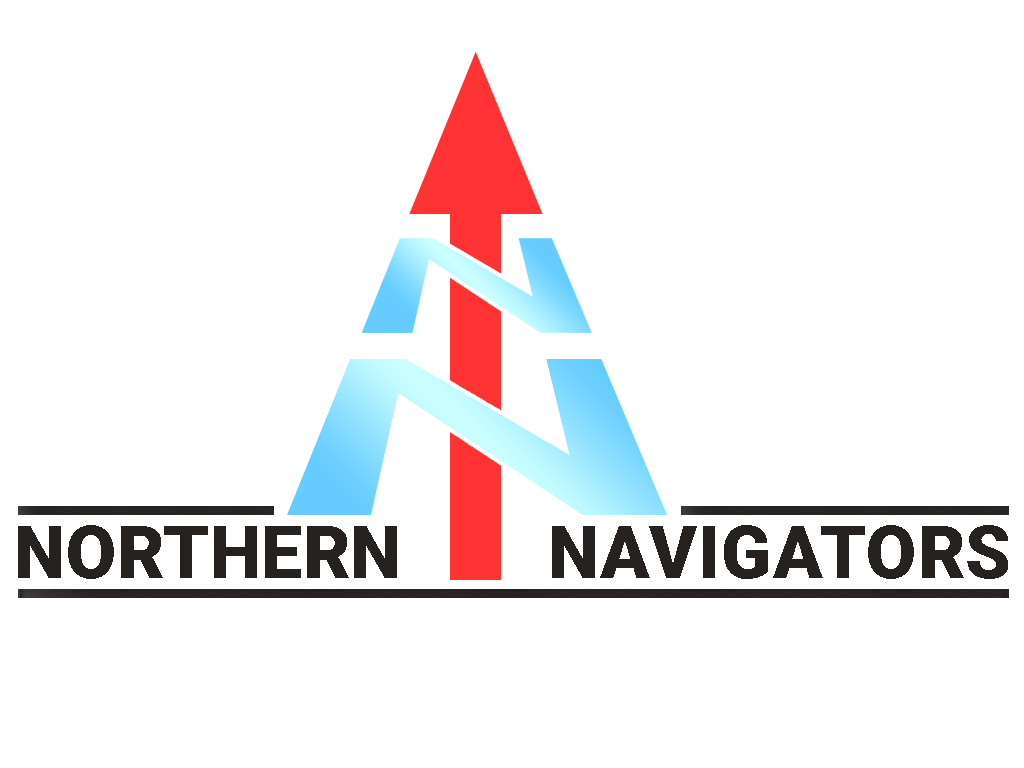From Browney Waders to Northern Navigators – a brief History with thanks to Don Smith for original content.
On the 18th June, 1967, the British Orienteering Federation held their first National Championships in Hamsterley Forest using a black and white copy of the OS map. Following on from this, in January 1969, seven people got together to form a club called Browney Waders. The name of the club was the result of part of the town of Lanchester being flooded by the river Browney during that winter. John Robertson was elected as the first Chairman of the club, with Susan Rogers acting as Secretary and John Nelson as Treasurer. A month later, 21 people had been invited to an introductory talk on orienteering by Don Smith, of the newly formed NEOA. Shortly after that, the more suitable name of Lanchester Orienteers was adopted and at the end of its first year the club boasted 25 full senior members with 15 juniors. The first public appearance of Lanchester Orienteers was at JK69.

Though not yet strong in the competitive field, Lanchester Orienteers soon made a name for itself in planning, organising and mapping. The first club event was held at Black Banks in May 1969, with entry fees set at, senior 5/-, others 2/6 (that’s 5 bob and half a crown in old money). There were nine classes on offer ranging from wayfarers to 8km for the senior men. This was to be closely followed by the first badge event in November 1969, using the North East’s first colour map drawn by Jim Hudson for the Northern Championships that September in Hamsterley.
Unfortunately, snow fell two days before the event and as the controllers and organisers cars collided on a forest road, while the planner was positioning controls, they felt obliged to cancel the event in the interests of safety. The event was finally held in January 1970, when Alan Morgan and Dave Caudwell’s names appeared for the first time in the results. The most important events that Lanchester staged in the early years were the Northern Senior / Intermediate Championships in 1972, and the British Junior Championships in 1974, both held in Chopwell Woods.
In 1970, when orienteering standards in the club began to improve, Susan Rogers and David Allport (junior) were selected for BOF tours. Subsequently, following nomination by NEOA and selection by BOF, other juniors have benefited from the experience of the annual Junior Tour. Since the formation of the British Junior Squad, some members were selected to represent their country abroad and in the Home Internationals – these included Jane Malley, Andrew Malley, Steven Murdoch, Steven Hale and Michael Nield. In those early years, Lanchester boasted several British Champions – Jane Malley (W13) in 1974, 1975 and (W15) in 1976; Susan Rogers (W35) in 1976 and 1977; Roy Malley (M43) in 1975; and Andrew Philipson (M35) in 1976 and 1978. But undoubtedly the clubs greatest achievement was that of Andrew Philipson winning the Elite class in the 1977 Karrimor International Mountain Marathon, partnered by Howard Forrest.
Lanchester members also enjoyed notable success in Course Planning competitions – the earliest being in 1974, when Brian Howe, planner of the British Junior Championships, won a national award. Susan Rogers was placed 3rd in an International Planning event in 1975, when Russians took the first two places. Both Steven and David Murdoch won National Course planning competitions and Steve Hale won a similar competition in the North East region.
During 1984 it was felt that the name of Lanchester Orienteers did not truly reflect the change in membership. Which by now had spread from Northumberland down to south Durham. Following a postal ballot, the name was duly changed to Northern Navigators in January 1985. Ron Lyons designed the new club logo and F Black did the art work for the new badge and letterheads.
The club has produced many British Champions over the years – Elizabeth Hale (W45 -1984, 1985, W60 – 1998); Alan Morgan (M60 – 1991); Andrew Philipson (M50 – 1992). Steven Hale was selected to run in the World Championships in Australia in 1985.
In October 1992, the club hosted a ‘Jubilo’ weekend in Hamsterley to celebrate 25 years of Orienteering since the foundation of the British Orienteering Federation. Working with our kindred clubs, CLOK and NATO, together with generous financial support from Northumbrian Water, efforts were channelled into ensuring that the weekend would be a memorable one, which included a re-run of the 1st British Championships on the old map followed the day after by a National event using a current version. This turned out to be one of the biggest and most successful events in the clubs history.
Among other memorable events were the 21st anniversary event in 1990 to celebrate the first event organised by Lanchester Orienteers at Black Banks in 1969. Also the two National events in 1997 and 1999 at Bewick Moor for the atrocious weather conditions.
During the early years, notable milestones in mapping included the 5 colour map of Chopwell (1972) drawn by Don Smith, Terry Sankey’s 1974 Chopwell map and Dave Caudwell’s excellent maps of Broomley Fell (1976) and Kellas (1979).
In 1997, one of the clubs most prodigious and successful mappers, Dave Caudwell, was awarded a certificate of Cartographic Excellence from the BOF Map Group, for his 1996 map of Bewick Moor North. This was closely followed by being awarded the Bonnington Trophy for services to mapping in 1998 – BOF’s highest award for mapping, named after the BOF president Sir Chris Bonnington. Most recently his cartographical skills were further acknowledged when he received the Chichester Trophy in 2005 for the best map by a non-professional, his map of the Simonside Hills was used for the BOC in 2004.
